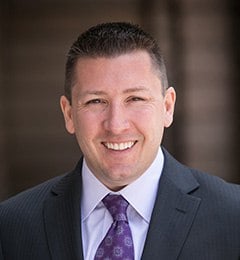The Misconception of IT Service & Asset Management Integration
Government Business Development | Government | Technology | Resources and Insight | 2 Min Read

When assessing the IT competency of organizations, many executives tend to believe their IT sectors are meeting their organizational objectives. The majority of executives believe that simply possessing an IT service is the key to reaching those objectives. This misconception could not be further from the truth, as a study found that less than half of the respondents rate their IT management processes as “excellent” or “good.”
Due to this low satisfaction, many IT moguls are frustrated with these results and wonder why their IT asset management system failed and so many people rated their process less then exceptional.
IT processes divide into two central components - IT Asset Management (ITAM) and IT Service Management (ITSM). ITAM deals with possessing the hardware and software of devices, and as most executives think it is enough for solving their IT challenges such as monitoring and managing assets in their organization. This is an important portion of the IT operations process, however simply possessing the hardware is not going to result in “excellent” ratings from customers and end users.
The second node in the IT process deals with the service portion of the IT department. ITSM plays an extremely significant part in the realm of processes because it determines the amount of calls, reduces escalations, and provides a seamless customer experience for any issues. When integrated together, ITAM and ITSM make an excellent powerhouse of an IT department, and allow organizations to meet their critical goals.
Unfortunately, another study found only 16% of respondents indicated a high level of data process integration between their ITAM and ITSM systems. IT executives need to step back and reevaluate their IT processes and make sure they have the software that can optimize both service and asset management.
Identifying and recognizing which applications and processes to converge can be difficult, so consider asking yourself these questions to provide guidance toward the best integrated IT operations management solution.
10 Questions To Consider about Your IT Processes
- How many processes, tools, and solutions are currently in place at your organization to monitor and manage IT assets and services?
- What level of process automation connects your IT asset and service management processes?
- What level of process integration exists between your IT management tools and solutions?
- How do different departments interact with each other when an issue requires collaboration? Is cross-department collaboration done manually or is this automated?
- What level of asset information is available to your level 1 support staff when a user reports trouble with an asset? Do they have to escalate to a tier 2 team to gain access to this information?
- How much are you spending on IT consulting services?
- Can you manage and secure all of your physical, virtual, and mobile devices?
- Do you have a single view into IT service management?
- Do you engage with multiple vendors for your IT management needs? (Would you prefer a single supplier?)
- How much manual effort is involved when you roll out new operating systems, upgrade hardware, or deploy new applications? (And how easy is it to migrate users’ preferences, settings, and favorites to their new machines?)
To read more about the important of convergence between ITSM and ITAM, download the case study.
 And if you’re looking for a solution that combines both IT Service & Asset Management, you can sign up for a free trial of BMC FootPrints!
And if you’re looking for a solution that combines both IT Service & Asset Management, you can sign up for a free trial of BMC FootPrints!
About Kevin Lancaster
Kevin Lancaster leads Winvale’s corporate growth strategies in both the commercial and government markets. He develops and drives solutions to meet Winvale’s business goals while enabling an operating model to help staff identify and respond to emerging trends that affect both Winvale and the clients it serves. He is integrally involved in all aspects of managing the firm’s operations and workforce, leading efforts to improve productivity, profitability, and customer satisfaction.




